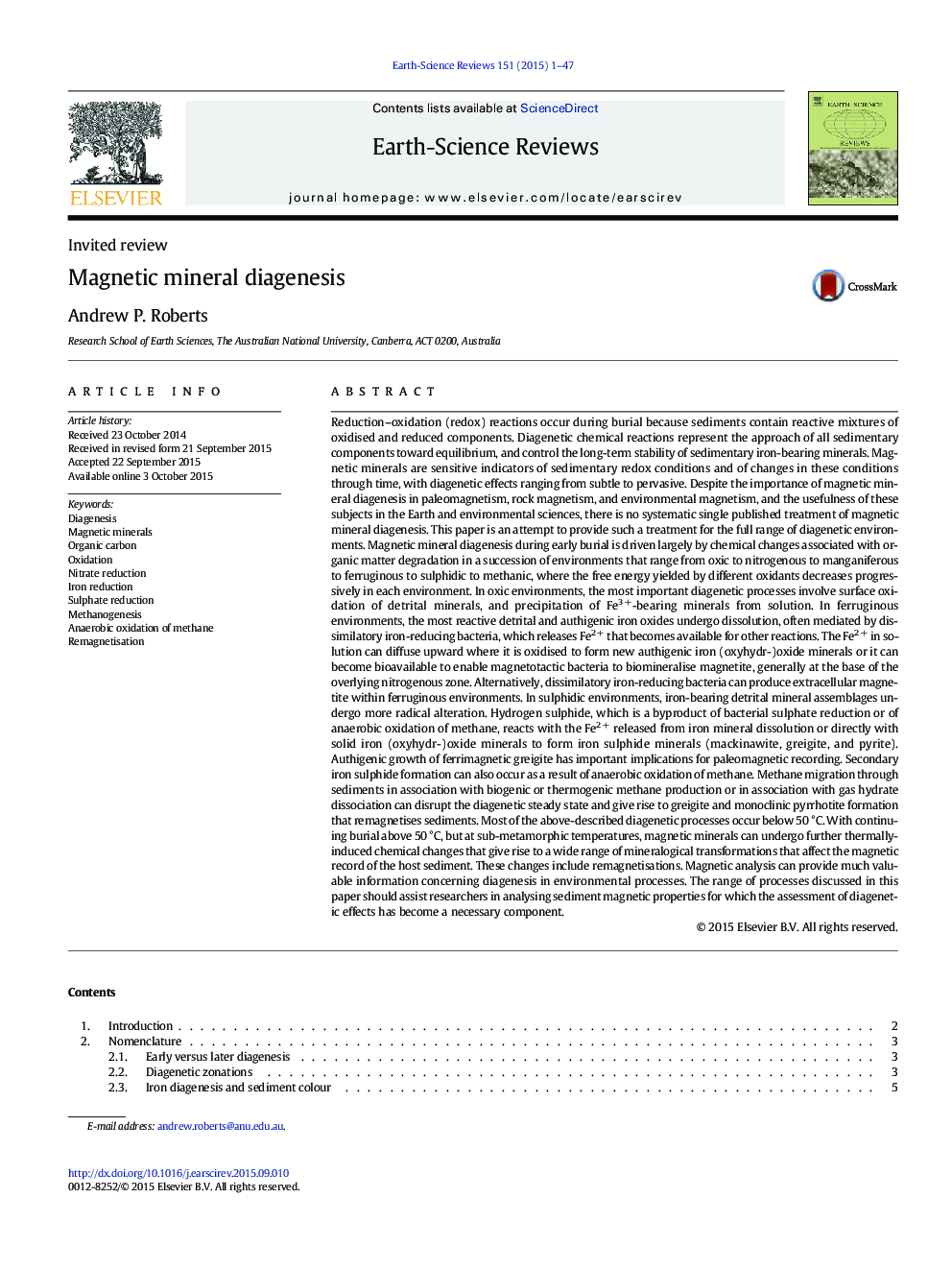| کد مقاله | کد نشریه | سال انتشار | مقاله انگلیسی | نسخه تمام متن |
|---|---|---|---|---|
| 4725670 | 1639951 | 2015 | 47 صفحه PDF | دانلود رایگان |
Reduction–oxidation (redox) reactions occur during burial because sediments contain reactive mixtures of oxidised and reduced components. Diagenetic chemical reactions represent the approach of all sedimentary components toward equilibrium, and control the long-term stability of sedimentary iron-bearing minerals. Magnetic minerals are sensitive indicators of sedimentary redox conditions and of changes in these conditions through time, with diagenetic effects ranging from subtle to pervasive. Despite the importance of magnetic mineral diagenesis in paleomagnetism, rock magnetism, and environmental magnetism, and the usefulness of these subjects in the Earth and environmental sciences, there is no systematic single published treatment of magnetic mineral diagenesis. This paper is an attempt to provide such a treatment for the full range of diagenetic environments. Magnetic mineral diagenesis during early burial is driven largely by chemical changes associated with organic matter degradation in a succession of environments that range from oxic to nitrogenous to manganiferous to ferruginous to sulphidic to methanic, where the free energy yielded by different oxidants decreases progressively in each environment. In oxic environments, the most important diagenetic processes involve surface oxidation of detrital minerals, and precipitation of Fe3 +-bearing minerals from solution. In ferruginous environments, the most reactive detrital and authigenic iron oxides undergo dissolution, often mediated by dissimilatory iron-reducing bacteria, which releases Fe2 + that becomes available for other reactions. The Fe2 + in solution can diffuse upward where it is oxidised to form new authigenic iron (oxyhydr-)oxide minerals or it can become bioavailable to enable magnetotactic bacteria to biomineralise magnetite, generally at the base of the overlying nitrogenous zone. Alternatively, dissimilatory iron-reducing bacteria can produce extracellular magnetite within ferruginous environments. In sulphidic environments, iron-bearing detrital mineral assemblages undergo more radical alteration. Hydrogen sulphide, which is a byproduct of bacterial sulphate reduction or of anaerobic oxidation of methane, reacts with the Fe2 + released from iron mineral dissolution or directly with solid iron (oxyhydr-)oxide minerals to form iron sulphide minerals (mackinawite, greigite, and pyrite). Authigenic growth of ferrimagnetic greigite has important implications for paleomagnetic recording. Secondary iron sulphide formation can also occur as a result of anaerobic oxidation of methane. Methane migration through sediments in association with biogenic or thermogenic methane production or in association with gas hydrate dissociation can disrupt the diagenetic steady state and give rise to greigite and monoclinic pyrrhotite formation that remagnetises sediments. Most of the above-described diagenetic processes occur below 50 °C. With continuing burial above 50 °C, but at sub-metamorphic temperatures, magnetic minerals can undergo further thermally-induced chemical changes that give rise to a wide range of mineralogical transformations that affect the magnetic record of the host sediment. These changes include remagnetisations. Magnetic analysis can provide much valuable information concerning diagenesis in environmental processes. The range of processes discussed in this paper should assist researchers in analysing sediment magnetic properties for which the assessment of diagenetic effects has become a necessary component.
Journal: Earth-Science Reviews - Volume 151, December 2015, Pages 1–47
